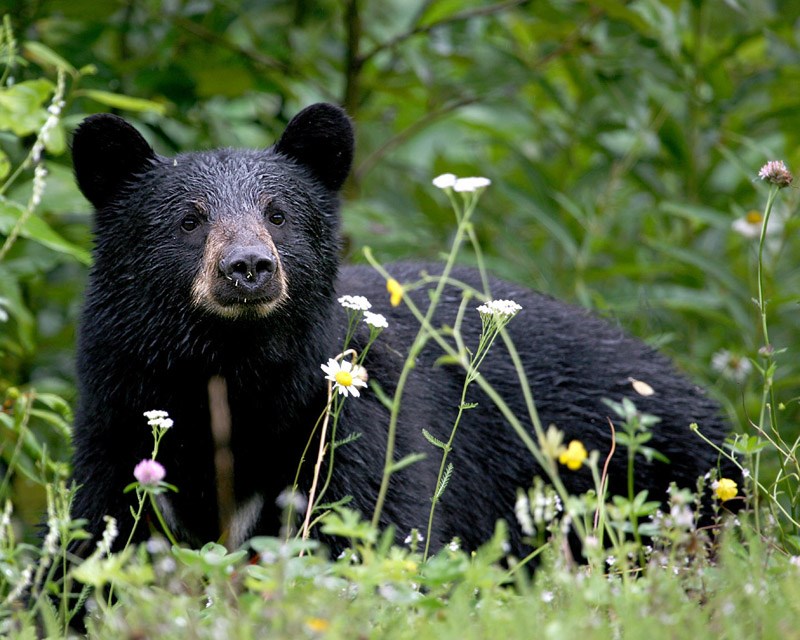I really enjoy working with my community as the coordinator for the Sunshine Coast WildSafeBC program.
For the past three years I have had contact with thousands of residents and visitors alike. I hear everyone’s bear stories, and there are a lot — hundreds upon hundreds of bear encounters, and yet not one person was physically harmed.
Not a real surprise here, black bears are usually assessing us to see if we are a potential threat. Defensive attacks and blustery behaviour, such as bluff charging, paw swatting and vocalizing, are signs of nervousness — not aggression. That being said, they are not to be deliberately approached. Some bears (like some individuals) have different levels of tolerance and require a much wider berth.
It is beneficial to learn about the ecology and behaviour of this species. The best way to maintain personal safety and reduce human-bear conflict is by replacing fear with knowledge. How to avoid surprise encounters and how to react if you see a bear are important to know here in bear country.
You can begin online by visiting www.wildsafebc.com or the WildSafeBC-Sunshine Coast Facebook page at www.facebook.com/pages/Wildsafebc-Sunshine-Coast/462624630479359 for information about wildlife.
There are plenty of myths out there. For one, bears do not growl; they vocalize by moaning, grunts, huffing/blowing and jaw popping (clacking teeth together, usually when retreating). If you want to scare a bear away, it is advisable to use human voice. Do not make animal sounds — it probably embarrasses your kids anyway. Here is a fact: a person is more likely to die of a bee sting, dog attack or lightening strike than they are from a bear attack (that includes other types of bears in the ursus family).
Bears definitely have a keen sense of smell (2,100 times better than us), but their hearing and vision are quite similar to a human. Therefore, to avoid a surprise encounter, it is advisable to make noise (human voice, singing, clapping rocks or hands together) to alert wildlife of your presence — especially near running water or in dense brush and blind corners.
What do you do if you see a bear? The most important safety message is: stay calm and don’t run. Let the bear know you are human (arms out to side, human voice, “yo bear, it’s OK bear”), back away slowly, go inside (if you can) or wait for the bear to move on if you are on a trail. Use adversive noise (such as air horn, pots and pans) from a safe location, and always leave the bear an avenue of escape.
Black bears evolved from the cover of the forest. Their main defence is usually to run away or to climb. Carrying bear spray in a side holster is also an option when out in the great outdoors. Keeping dogs on a leash is also recommended because they can often provoke a defensive attack from wildlife.
Managing our attractants is key to reducing conflict with our wildlife neighbours.
It works like a broad brush: if we can eliminate things that attract a bear, we can reduce the amount of conflict with other species at the same time. The fruit trees are ripening, and the secure storage of garbage remains an issue.
Don’t forget to enter the contest to win a certified bear-proof bin from TyeDee Bin (on the wildsafebc-sunshinecoast facebook link). If you need help harvesting your fruit, contact the volunteers of the SC Fruit Tree Project at [email protected].
For more information, or to book a presentation, please contact Kim at sunshine
[email protected] or call 604-885-6800, ext 6476.



